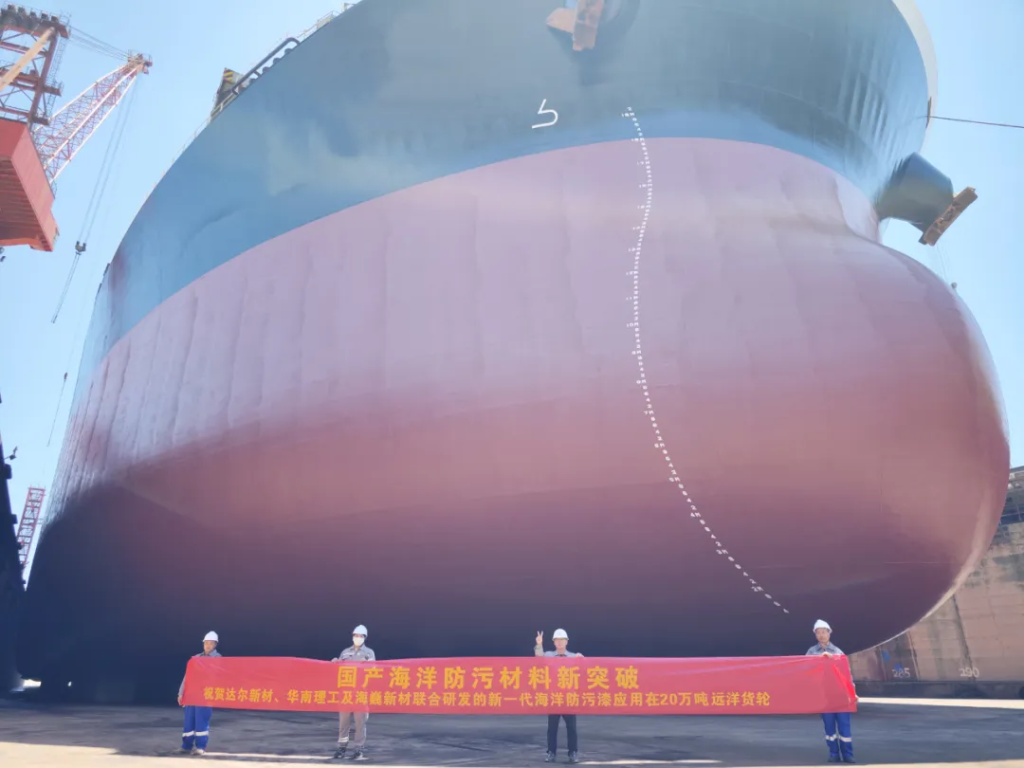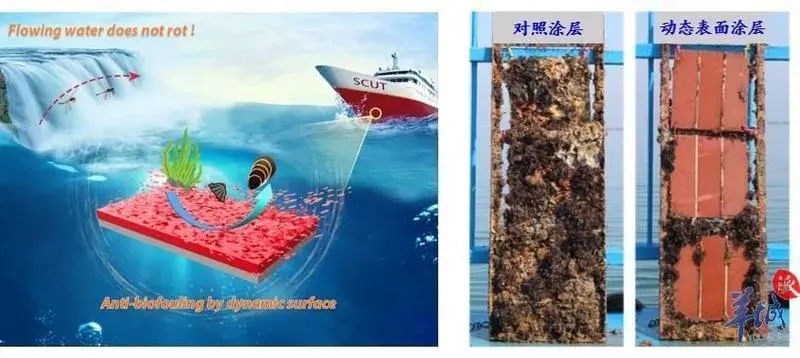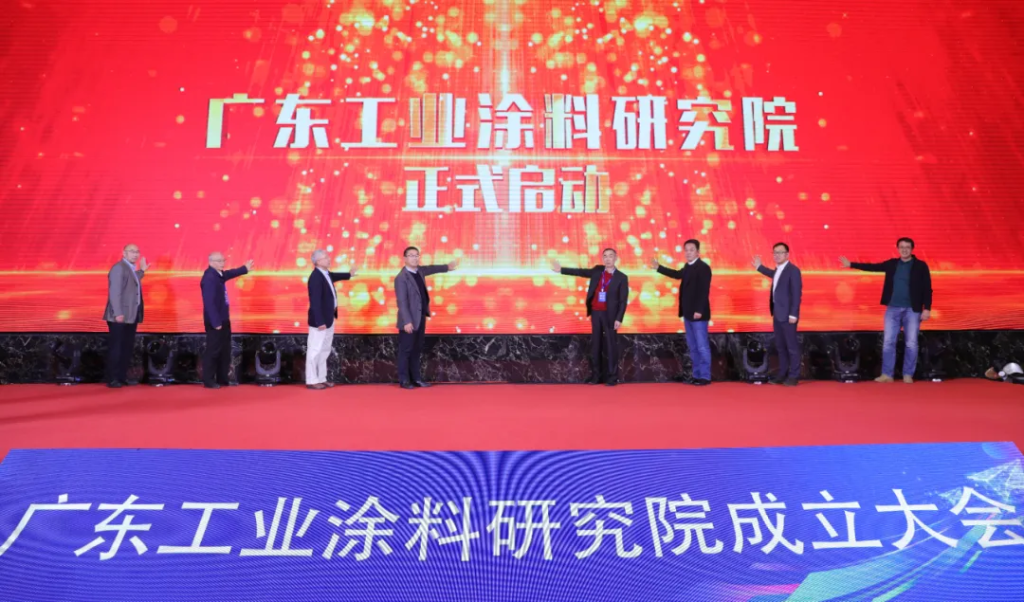
Recently,the industry-university-research cooperation project between Guangdong Dar New Material Co.,Ltd.and South China University of Technology,titled”Next-Generation High-Performance Environmentally Friendly Anti-Fouling Coating for Ships,”has been successfully applied to heavy ocean-going vessels,assisting in the repair of a 200,000-ton bulk carrier.This marks a significant breakthrough for Chinese coating companies in the field of marine ship coatings,signifying a major advance in the application of domestic marine ship coatings.
It is understood that the 200,000-ton bulk carrier,measuring 300 meters in length and 50 meters in width,underwent a full-ship coating area of approximately 30,000 square meters during this repair,with the anti-fouling paint coating area covering about 23,000 square meters.Guangdong Dar New Material Co.,Ltd.provided a comprehensive coating solution tailored for different areas.Previously,foreign brands were generally used for the repair of ocean-going vessels.The selection of Dar New Material’s marine anti-fouling materials this time represents a landmark change,as domestic marine anti-fouling materials have broken through key technological bottlenecks and gained the trust of shipowners.
According to the introduction,the next-generation high-performance environmentally friendly anti-fouling coating for ships was developed by Professor Zhang Guangzhao’s team from the School of Materials Science and Engineering at South China University of Technology.The project has obtained 31 authorized Chinese and foreign invention patents,breaking the monopoly of foreign anti-fouling technologies.For the first time internationally,the team proposed the”dynamic surface anti-fouling”strategy and invented a series of biodegradable polymer-based dynamic surface anti-fouling materials based on this strategy.Breakthroughs have been achieved in static,long-term,and eco-friendly anti-fouling performance.The related technologies have won the First Prize of Guangdong Province Science and Technology Invention Award and the Guangdong Province Patent Gold Award,and have obtained patents in several countries,including those authorized by maritime research powerhouses such as the United States and Japan.Compared to marine corrosion prevention technology,the development cycle for marine anti-fouling technology is extremely long.While marine corrosion prevention deals with corrosive environments such as seawater or atmosphere,which can be simulated in laboratories for material testing,marine anti-fouling materials must undergo”real-ship experiments,”which are extremely costly and labor-intensive.

Marine anti-fouling technology first faces the extremely complex marine environment.Different sea areas have varying temperatures,salinities,and types of marine organisms.Coatings that are suitable for certain sea areas cannot be guaranteed to work in other areas.Moreover,there are over 4,000 types of microorganisms,animals,and plants in the ocean that can adhere to ships and equipment.It is very difficult to find a coating that can effectively prevent all types of marine organisms.Even foreign technological products cannot adequately solve the above two challenges.
This new type of marine anti-fouling technology,independently developed in China,adopts a”fighting fouling with fouling”approach.In the ocean,some marine organisms have surfaces that are not adhered to by other organisms or microorganisms.The reason is that these organisms secrete special substances.Inspired by this,Professor Zhang Guangzhao’s team introduced marine natural product-based anti-fouling agents into the dynamic surface anti-fouling system,allowing them to be slowly and controllably released into the ocean,thus realizing the new concept of”taking from the ocean and using for the ocean.”
Previously,the Chinese shipbuilding industry used foreign technological products,with 95%of the domestic market being dominated by foreign entities.This anti-fouling material has achieved a breakthrough from”nothing to something”in China,breaking the foreign technological monopoly and solving the key technological bottleneck issues in the development of domestic anti-fouling coatings.
“What are new materials?New materials are materials that can be applied to new technologies and serve the national construction in the new era.As scientific researchers and people’s teachers,we must have this sense of social responsibility,”said Professor Zhang Guangzhao.”On this research path of new materials,we can still do many things and have many aspirations.I hope that in the near future,more outstanding scientific researchers will join our team to jointly expand the application scope of materials,achieve larger-scale application of scientific research results nationwide and internationally,and effectively solve specific problems encountered in national construction and human development.”
Guangdong,as a major manufacturing province in China,provides a broad development space for Guangdong industrial coatings.To better develop Guangdong industrial coatings,the Guangdong Coatings and Inks Association has successively established the Industrial Coatings Branch and the Coating Branch.These branches have done a great deal of work to promote high-quality industrial development and transformation and upgrading.
On December 21,2023,the Guangdong Coatings and Inks Association,in collaboration with multiple national universities and research institutions,invited key downstream application units and representatives of backbone enterprises in Guangdong’s industrial coatings industry to jointly establish the Guangdong Industrial Coatings Research Institute.Professor Zhang Guangzhao was appointed as the chairman of the Academic Committee,and Professor Chen Zhonghua from South China University of Technology was appointed as the director.

The Guangdong Industrial Coatings Research Institute will lead with technology,making industrial coatings a new growth engine for Guangdong coatings.It will guide the technological innovation of Guangdong industrial coatings and accelerate the integration of the service industry chain and innovation chain.




